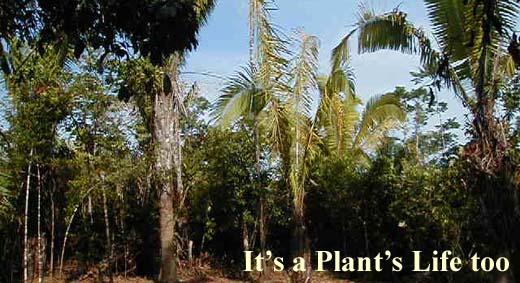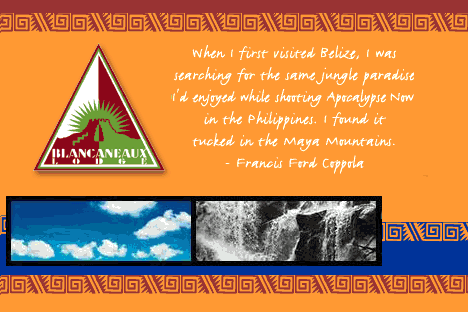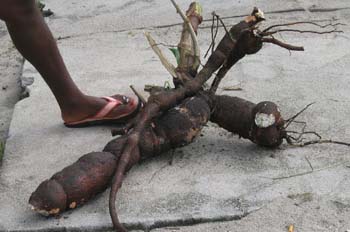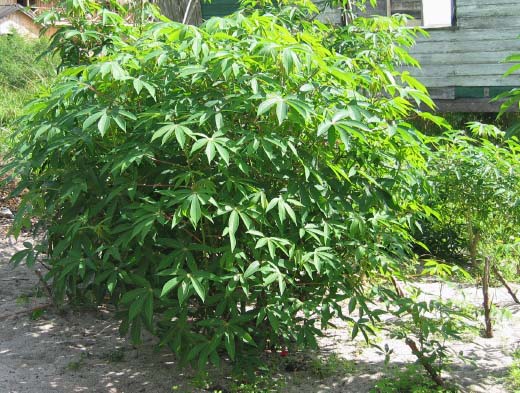 |
||||||
CassavaManioc, Yucca or Mandioca, Gumanana in Garifuna |
||||||
Cassava is native to Tropical America but has become an important crop worldwide. Portuguese traders introduced cassava to Africa hundreds of years ago where it has become a food staple for five million people. In Asia it is grown for commercial feed. Brazil claims cassava originated there and only Nigeria competes with their annual yield; in 1999 Nigeria produced 33 million tons of cassava. Here in Belize cassava plays an essential role in Garifuna culture. Just look in the Garifuna-English dictionary and you will find no less than 10 different words for cassava in all its uses and forms! |
||||||
|
Palm Treeswith Konny Stephan |
I
was born in the state of South Carolina in the mid 1950's. The
South Carolina state flag today has a Palmetto palm tree.
When I first ventured south from the Carolinas to Belize, I was immediately taken back by the number of what I believed at the time to be Palmetto palms as well as the other varieties found Belize. According to the website www.statehousegirls.net, South Carolina adopted the Palmetto Palm as it's "Official State Tree" by Joint Resolution No. 63, approved March 17, 1939. The South Carolina Palmetto is classified by the U.S. Department of Agriculture as "Inodes Palmetto", also referred to as the Sabal Palmetto, most commonly known as the Cabbage Palmetto. The Cabbage Palmetto has long been associated with the history of South Carolina. The Cabbage Palm can be found today on the state flag and the state's official seal. Quoting the statehousegirls.net website further, the Cabbage Palm is "symbolical of the defeat of the British fleet by the fort, built of Palmetto logs, on Sullivan's Island". Even when I was growing up I could remember that there were countless Palmetto palms scattered about the state. Today you generally see them in gigantic Mexican clay plots withering away inside the atriums of shopping malls. However, researching palm trees further on the Internet:
Belize has at least 18 species of palms according to Lisa Carne's book 'Mangoes and More'. But according to Ms. Carne's book on page 22, Belize has "only one coconut palm", the Cocos nucifera or Tidibu fáluma in Garifuna. Lisa notes that though there is only one true coconut palm, there are "several varieties", two of which, the Maypan Hybrid and the Malayan Dwarf, have shown resistance to Lethal Yellowing, the deadly disease that has plagued palm lovers from Holbox on the northern Yucatan to the Panama Canal. Further reading and exploring the Internet for information regarding palm trees in Belize led me eventually to Chris Berlin who has a report on the website AmbergrisCaye.com. According to Chris, there are actually four varieties of coconut palms in Belize. Those would be, the Atlantic or Jamaica Tall palm, the Malaya Dwarf palm, the Mayjam palm and the Maypan or Mapan palm. Chris has photos of each of his four known varieties of Belizean coconut palms on his webpage about Ambergris Caye, and Lisa has in her book a picture of the only variety of coconut palm she is aware of from her base in Placencia. I
guess one could surmise its controversies just like this that
explains why the Egyptians have pyramids in Egypt, while the Maya
have Maya temples in Belize. |
 |



